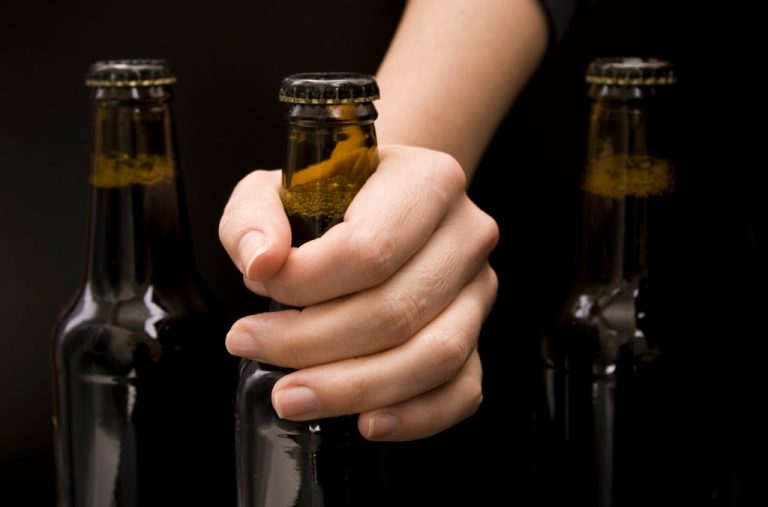Meanwhile, however, genome-wide association studies in addiction have already provided important information. For instance, they have established that the genetic underpinnings of alcohol addiction only partially overlap with those for alcohol consumption, underscoring the genetic distinction between pathological and nonpathological drinking behaviors [50]. To achieve this goal, we first discuss the nature of the disease concept itself, and why we believe it is important for the science and treatment of addiction. This is followed by a discussion of the main points raised when the notion of addiction as a brain disease has come under criticism. Key among those are claims that spontaneous remission rates are high; that a specific brain pathology is lacking; and that people suffering from addiction, rather than behaving “compulsively”, in fact show a preserved ability to make informed and advantageous choices. In the process of discussing these issues, we also address the common criticism that viewing addiction as a brain disease is a fully deterministic theory of addiction.
Complexity and Causality

All of these individuals are correct in their observations, but they are only seeing part of the picture – a picture that is exceedingly complex because it’s in a constant state of motion. Of all the stimuli in our environment, it is other people – particularly those people with whom we maintain our most intimate http://harvardsquarebookstore.com/book/infinite_jest/ relationships – that arguably have the largest impact on our behavior. Beginning at birth, most of the knowledge we acquire about our world is obtained via our interactions with others, and it is other individuals who determine many, if not most, of the environmental contingencies that control our behavior.

Theorizing personal, interpersonal, and institutional factors in clinical care

In beginning to address this notion, the goal of the present review is to evaluate whether the consideration of neurobiological and psychodynamic perspectives provides insight to our understanding of addiction, particularly substance-use disorders (SUDs). First, addiction will be discussed from a neurobiological perspective, based on recent neuroscientific findings and with a critical consideration of two central neurobiological theories of addiction –namely the “Opponent-process” (Solomon & Corbit, 1974) and the “Incentive-sensitization” (Robinson & Berridge, 1993) theories. Second, addiction will be explored through https://www.altzone.ru/forums.php?m=posts&q=3929&n=last a psychodynamic lens to understand some subjective and relational aspects of the disorder. Finally, the value in synthesizing neuroscience and psychodynamic perspectives to our understanding of addiction will be considered, particularly in relation to attachment bonds. Although substance use and abuse may impact brain and behavior, it is still unclear why some people become addicted while others do not. Neuroscientific theories explain addiction as a series of between- and within-system neuroadaptations that lead to an increasingly dysregulating cycle, affecting reward, motivation, and executive control systems.
The new psychology

In both cases, addiction would be understood as an act of rebellion against castration, by self-administering an extra quota of jouissance (i.e., plus de jouir) with substance use (Bazan & Detandt, 2013; Lacan, 1969; Loose, 2002). Therefore, addiction in neurosis and perversion may be understood http://www.lekks.ru/modules.php?name=Pages&pa=showpage&pid=55 as overindulgence in the hedonic properties of drug-taking behaviors in an attempt to avoid acknowledging, and effectively dealing with, frustration. Some forms of frustration may be social norms and boundaries, social rejection, loneliness, or loss (Bazan & Detandt, 2013; Loose, 2002).
- Importantly, input from brain regions involved in higher order executive function (for example the dorsolateral prefrontal cortex) may allow for “top-down” control over motivations, in part driven by “bottom-up” subcortical processes, to engage in addictive behaviors [2, 80].
- A subsequent 2000 paper by McLellan et al. [2] examined whether data justify distinguishing addiction from other conditions for which a disease label is rarely questioned, such as diabetes, hypertension or asthma.
- As Hyman (2007) has written, “neuroscience does not obviate the need for social and psychological level explanations intervening between the levels of cells, synapses, and circuits and that of ethical judgments” (p.8).
- How these advances will impact the ethical relationship between our brains and our selves in addiction, is yet to be seen.
- Thus, obesity leads to both diabetes and arthritis; both obesity and arthritis limit exercise capacity, adversely affecting blood pressure and cholesterol levels; and all of the above, except perhaps arthritis, contribute to both stroke and coronary artery disease.
Biopsychosocial Plus Model
For this reason, we suggest a reformulation of some of the basic principles of the biopsychosocial model according to the emotional tone that engraves the relationship with such characteristics as caring, trustworthiness, and openness.49,50 Some principles of biopsychosocial-oriented clinical practice are outlined below. Underlying the analysis of power in the clinical relationship is the issue of how the clinician handles the strong emotions that characterize everyday practice. On the one hand, there is a reactive clinical style, in which the clinician reacts swiftly to expressions of hostility or distrust with denial or suppression. It is important not to look at the biological dimension as neurobiology alone, but to also take into consideration aspects of health functioning such as addictive behaviour, diet, exercise, self-care, nutrition, sleep and genetics. Amy Marschall is an autistic clinical psychologist with ADHD, working with children and adolescents who also identify with these neurotypes among others. Mental health professionals who utilize the biopsychosocial model in practice include extensive medical history, family history, genetics, and social factors in assessments in addition to psychological information.
- It was visionary in anticipating radical changes in the ways that health and disease were becoming theorized and researched, but programmatic because the radical changes were in their early stages, still in progress and not yet widely implemented.
- Importantly, not all insecurely attached children develop an addiction later in life (Schindler & Bröning, 2015).
- One explanation for this trend is that the toxic stress from trauma leads to a dysregulated stress response.
- Some of the effects (depression after a heart attack or stroke) can then become causal (greater likelihood of a second similar event).
- They either spoke about their parents as ‘betrayers’ and ‘bastards’ or as loving and supportive people.
- The goal of the present review is to evaluate the value of neurobiological and psychodynamic perspectives to inform our understanding of addiction, particularly substance-use disorders.
- Magnusson (1985) has described an interactional paradigm for examining aspects of human functioning that integrates psychology and biology as important person factors in examining person by environment interactions and is consistent with the biopsychosocial perspective.
- In reality, the level of interactions of both direct and indirect effects of individual components within and between domains is, in most situations, quite complex and, given the potential numbers and measurability of these variables, is beyond the scope of most research investigations.
- Empirical findings, new research paradigms, and theories developed in the last few decades effectively update and revitalize the BPSM.
